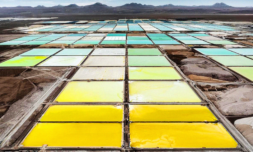NASA has been testing a new graphene battery that could one day sustainably power our electric planes and road vehicles.
Have we already found the natural progression beyond lithium EV batteries, even though they’ve yet to replace gas? Possibly is the answer.
Beyond its space-based endeavours, NASA is occupied with furthering humanity as we strive to solve our biggest problems.
In the ultimate goal of avoiding irreversible shifts to our climate, there are many things that need to happen and creating sustainable forms of transport that are also affordable is one such dilemma we must crack.
While our green roadmap currently relies on electric vehicles – largely powered by lithium or cobalt batteries – and advances in biofuels, NASA is working on something more all-encompassing: a revolutionary battery made from graphene called SABERS.
The acronym stands for Solid-state Architecture Batteries for Enhanced Rechargeability & Safety, and involves developing the holy grail of all power units. Supposedly, it could make electric flight possible, and would impact everything from public transportation to our phones and laptops.
Developed at a research centre in Cleveland, Ohio, SABERS has eliminated all of the toxic and dangerous materials that make current electrical batteries too risky or inefficient to replace fossil fuels, certainly for flying a plane full of over 100 people, for example.
For context, your average 747 flier requires a power density of at least 480 watt-hour per kilogram and the best a lithium battery can offer is around 260 watt-hour per kilogram.




















